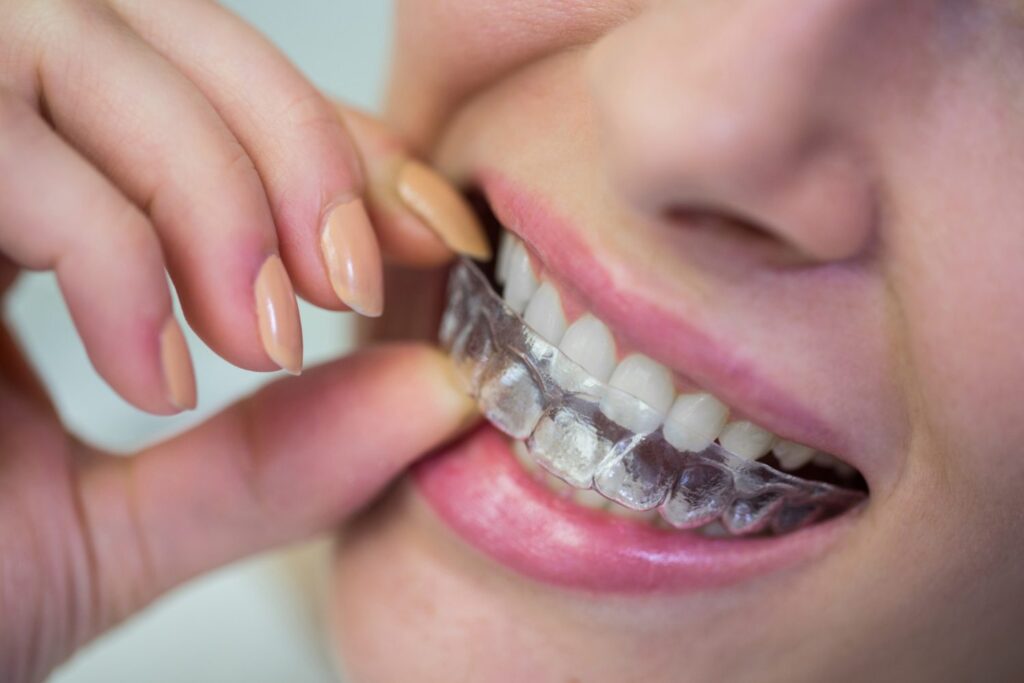Top Reasons to Select Invisalign Over Other Orthodontic Treatments
Top Reasons to Select Invisalign Over Other Orthodontic Treatments
Blog Article
Invisalign vs. Traditional Dental braces: Which Choice Is Right for You?
When thinking about orthodontic treatment, the option in between Invisalign and traditional braces offers several essential aspects that warrant mindful assessment. Invisalign uses a very discreet alternative with detachable aligners, while typical braces provide a more visible yet reliable option for serious imbalance.
Review of Treatment Options

On the other hand, standard braces include metal braces and wires that are bonded to the teeth. This method applies constant stress over time to accomplish placement. While effective for intricate orthodontic issues, standard dental braces call for regular check outs for changes and can posture difficulties in keeping dental health due to the difficulty of cleaning up about brackets and wires.
Both options have their values, and the choice typically rests on details oral conditions, lifestyle choices, and patient compliance. Ultimately, getting in touch with an orthodontic professional is important for identifying the most suitable treatment strategy customized to specific needs. Comprehending the nuances of each option can considerably influence the overall success of orthodontic therapy.
Aesthetic Considerations
A significant element affecting the option between Invisalign and typical dental braces is the aesthetic charm each therapy uses. Invisalign aligners are crafted from clear plastic, making them practically invisible when put on.
In comparison, typical braces include metal brackets and cords, which can be much more noticeable. While improvements in orthodontic technology have actually brought about the advancement of smaller sized braces and colored elastics, typical braces still preserve an even more obvious account. For some people, the visibility of braces may prevent them from seeking needed therapy.
Ultimately, the option in between Invisalign and traditional braces may depend upon individual preferences pertaining to visual appeals. Individuals that focus on discernment frequently lean toward Invisalign, while those who are much less worried concerning visibility may go with traditional braces. Comprehending the visual effects of each alternative is essential for making a notified choice that lines up with one's lifestyle and choices.
Convenience and Convenience

In regards to convenience, Invisalign aligners are removable, enabling individuals to appreciate their preferred foods without constraint and keep optimum dental health. Cleaning and flossing are streamlined, as the aligners can be secured throughout these regimens, whereas standard dental braces need cautious navigating around cables and brackets.
In comparison, standard braces demand normal modifications, making them less convenient for those with hectic routines. On the whole, the comfort and convenience of Invisalign make it an appealing option for many people looking for orthodontic treatment.
Treatment Period and Efficiency
While both Invisalign and conventional braces are efficient Bonuses in fixing oral imbalances, the period of treatment can differ considerably in between the 2 options. Usually, Invisalign therapy can take anywhere from 12 to 18 months, depending on the complexity of the instance. The clear aligners work by progressively changing teeth into their wanted placements, and routine follow-ups with an orthodontist assistance ensure development continues to be on track.
In contrast, traditional braces typically require a longer dedication, normally ranging from 18 months to 3 years. This results from their fixed nature and the use of braces and cables, which can be much more efficient for complicated cases and serious imbalances (Invisalign). The treatment efficiency of conventional dental braces is well-documented, as they permit accurate modifications and greater control over tooth motion
Ultimately, the selection in between Invisalign and conventional braces might pivot on both the expected treatment period and the details dental concerns available. Consulting with an orthodontist is vital, as they can provide customized suggestions based on specific needs, ensuring the chosen technique lines up with desired outcomes and durations.
Expense Contrast and Insurance Alternatives
Price plays a significant duty in the decision-making procedure for individuals taking into consideration orthodontic treatment, whether choosing Invisalign or conventional braces. Typically, the cost of Invisalign arrays from $3,000 to $8,000, while traditional braces generally cost in between $2,000 and $6,000. Factors influencing these costs consist of the intricacy of the instance, the period of treatment, and geographical place.
Several dental insurance plans give partial coverage for orthodontic therapies, however the specifics can differ commonly. Usually, typical braces might be a lot more frequently covered by insurance coverage strategies contrasted to Invisalign, which some insurance companies categorize as a cosmetic procedure.
Furthermore, numerous orthodontic practices use versatile layaway plan, making both therapy alternatives more easily accessible. Clients need to ask about possible funding choices and discounts for upfront repayments. Evaluating the complete cost, including insurance coverage benefits and layaway plan, is crucial for making a notified choice that lines up with both visual choices and budget considerations.

Verdict
In recap, the see this here choice between his explanation Invisalign and conventional braces depends upon numerous elements, consisting of aesthetic preferences, convenience, treatment duration, and price. Invisalign provides a discreet, detachable option that promotes dental hygiene and dietary versatility, while standard braces might be more suitable for complicated oral concerns and frequently come with a reduced cost factor. Eventually, appointment with an orthodontist is vital to analyze specific situations and establish the most proper therapy choice for accomplishing ideal oral placement.
When considering orthodontic therapy, the option between Invisalign and traditional braces provides several crucial factors that merit careful evaluation.Comparing Invisalign and traditional braces discloses distinct therapy options for orthodontic correction.While both Invisalign and conventional dental braces are reliable in dealing with oral misalignments, the duration of therapy can vary considerably in between the two choices.Expense plays a significant duty in the decision-making procedure for people considering orthodontic therapy, whether choosing for Invisalign or traditional dental braces.In summary, the selection in between Invisalign and typical dental braces hinges on several aspects, including aesthetic choices, convenience, therapy duration, and price.
Report this page